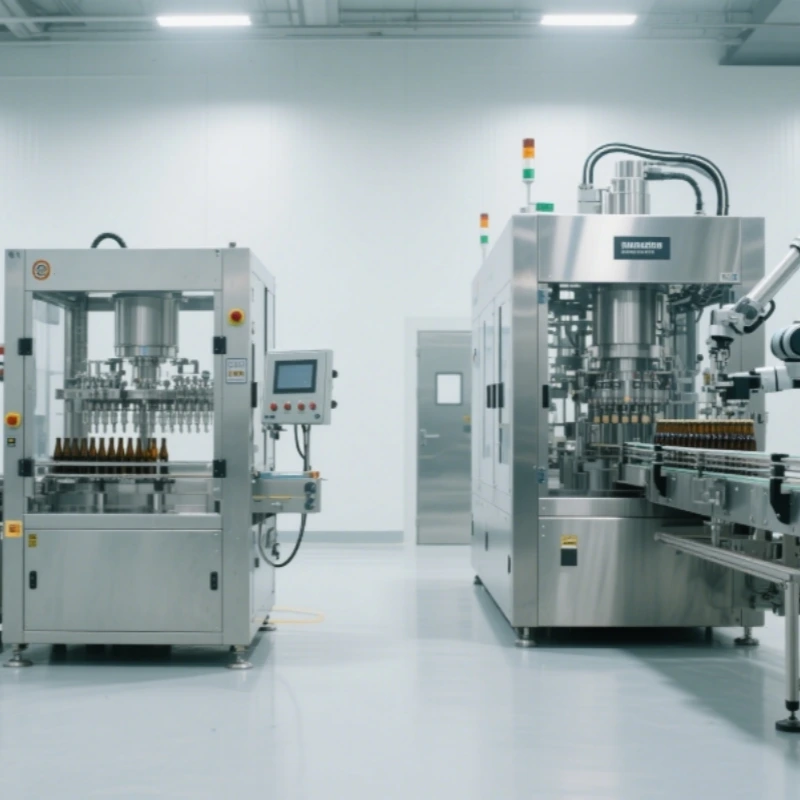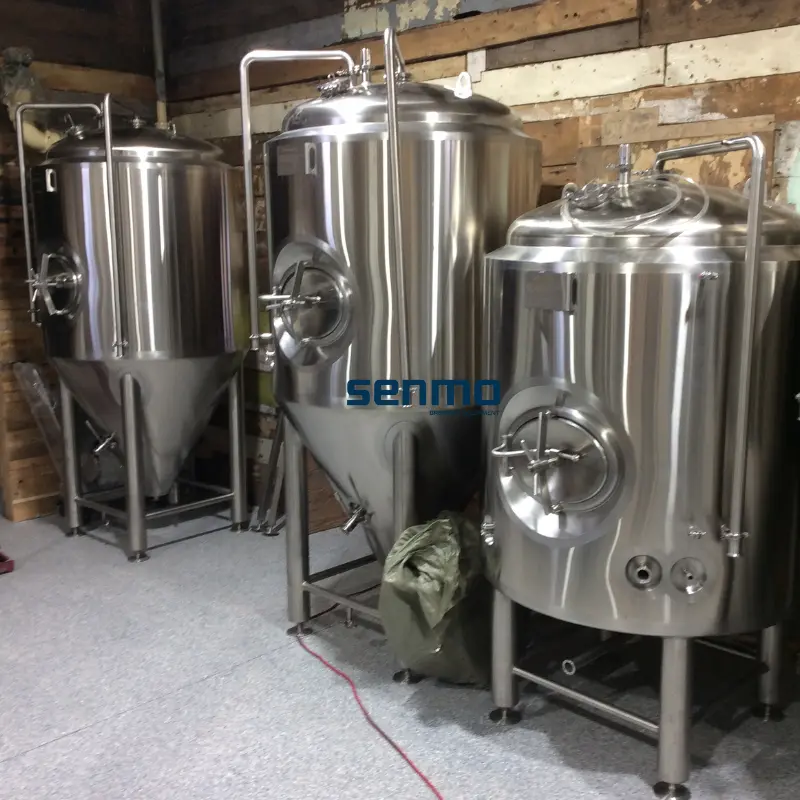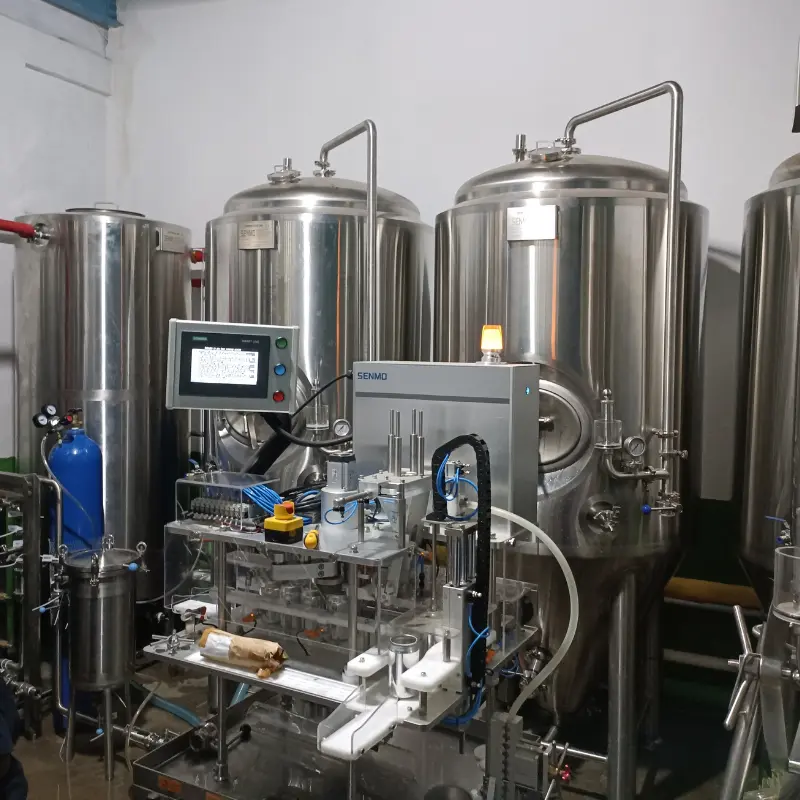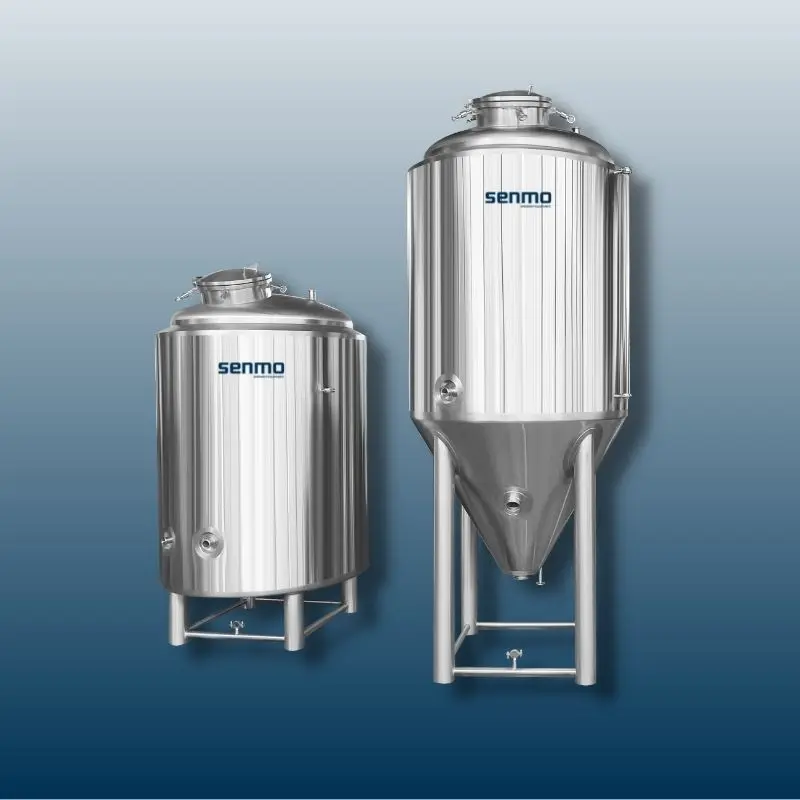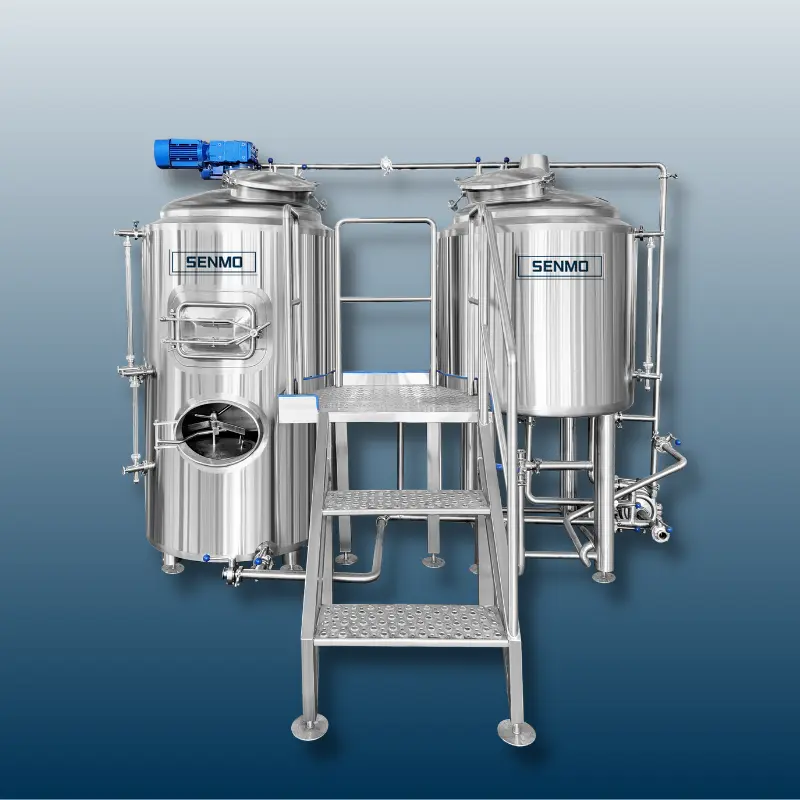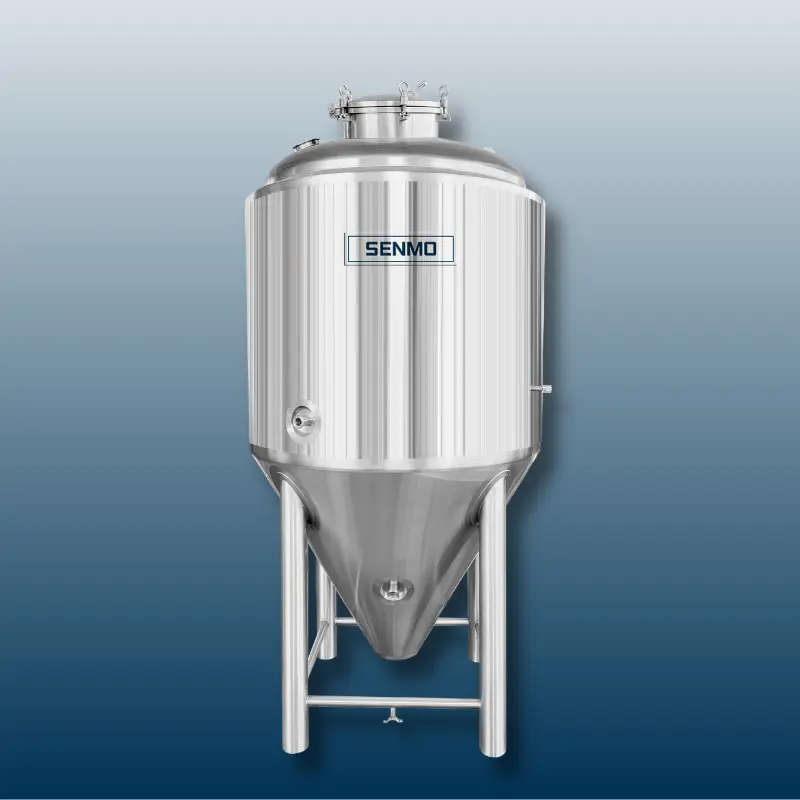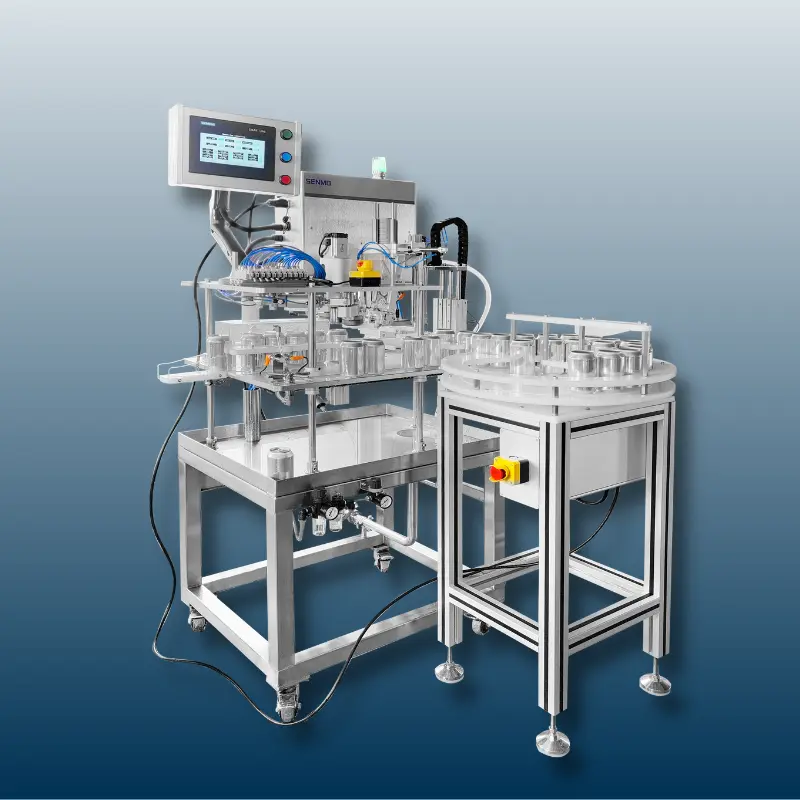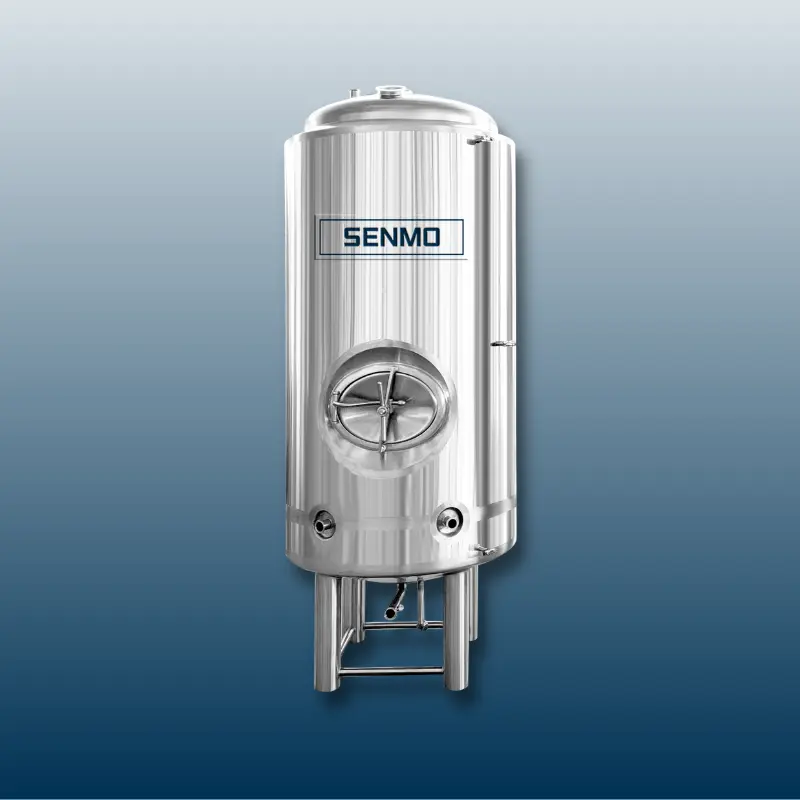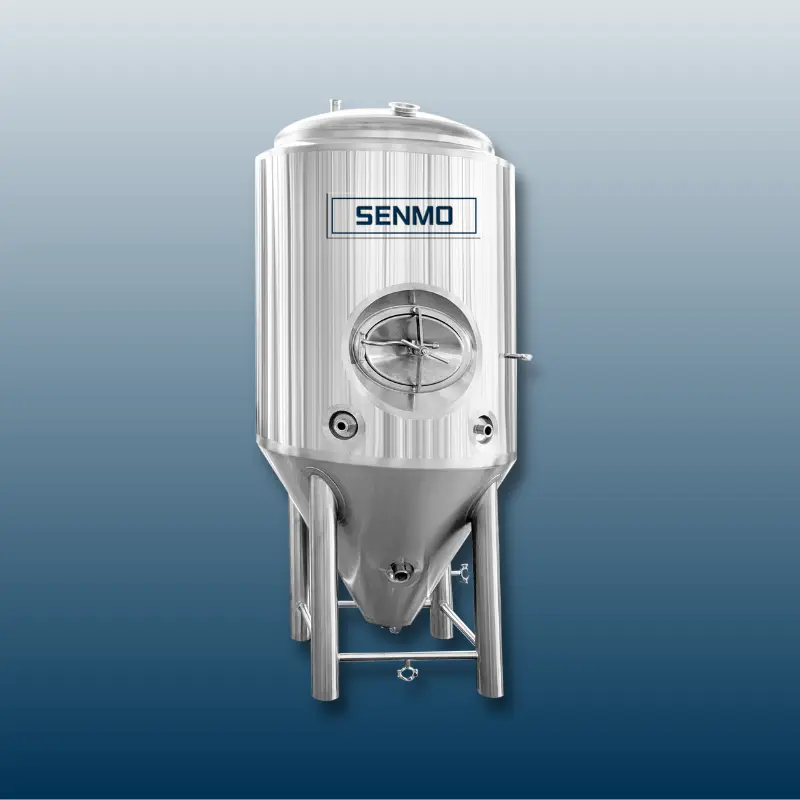The beer bottling process is a critical stage in brewery operations, directly impacting product quality, shelf life, and brand consistency. As the global craft beer market continues to expand and consumer demand for premium beverages grows, breweries must invest in efficient and reliable bottling solutions. Whether a small microbrewery or a large-scale production facility, choosing the right bottling system—semi-automatic or fully automatic—can significantly influence operational efficiency, cost management, and overall product quality.
The decision between semi-automatic and fully automatic beer bottling machines depends on several factors, including production volume, budget constraints, and long-term business goals. Semi-automatic machines require manual intervention for tasks such as bottle loading, capping, or labeling, making them a cost-effective choice for smaller breweries with limited output. On the other hand, fully automatic systems streamline the entire bottling process with minimal human involvement, offering higher speed and precision for large-scale operations. However, the trade-offs between upfront costs, labor requirements, and production flexibility make this a complex decision for brewery owners and production managers.
This article provides a detailed comparison of semi-automatic and fully automatic beer bottling machines, examining their respective advantages and disadvantages. By analyzing key factors such as efficiency, cost, maintenance, and scalability, we aim to help breweries determine the best bottling solution for their specific needs. Whether prioritizing affordability, automation, or future expansion, understanding these differences will enable informed decision-making in optimizing beer packaging operations.
Semi-Automatic Beer Bottling Machines: Definition, Working Principle, Pros and Cons
Definition and Working Principle
Semi-automatic beer bottling machines are packaging systems that combine mechanized operations with manual labor to fill, cap, and prepare beer bottles for distribution. Unlike fully automated lines that handle the entire process without human intervention, semi-automatic machines require operators to perform certain tasks, such as placing empty bottles onto the conveyor, adjusting filling levels, applying caps or labels, and removing finished products. These machines typically consist of a filling station, capping mechanism, and sometimes a basic labeling unit, but they lack the integrated robotics and advanced sensors found in fully automated systems.
The working principle of a semi-automatic bottling machine involves a step-by-step process where the operator loads bottles onto the machine, which then automatically fills them with beer to a preset volume. After filling, the bottles may move to a manual or semi-automatic capping station where an operator secures the caps, either using a handheld capping device or a foot-pedal-operated sealer. Some models include a simple labeling attachment, but this often still requires manual alignment. The level of automation varies between models, with some offering more automated features (such as automatic filling valves) while others remain heavily dependent on human control.
Advantages of Semi-Automatic Bottling Machines
1. Lower Initial and Operational Costs
One of the biggest advantages of semi-automatic bottling machines is their affordability. These systems have a significantly lower upfront cost compared to fully automated lines, making them an attractive option for small breweries, craft beer producers, and startups with limited capital. Since they require less sophisticated technology, maintenance expenses are also reduced. Additionally, energy consumption is generally lower because they operate at slower speeds and do not require high-power automation components.
2. High Flexibility for Small-Batch Production
Semi-automatic machines are ideal for breweries that produce limited quantities or frequently change their beer varieties. Unlike fully automated systems, which are optimized for mass production of a single product, semi-automatic fillers can easily adapt to different bottle sizes, shapes, and beer types with minimal adjustments. This flexibility is particularly valuable for craft breweries that experiment with seasonal brews, limited editions, or custom packaging.
3. Simpler Maintenance and Repairs
Because semi-automatic machines have fewer electronic components and no complex robotic systems, they are easier to maintain and repair. Most issues can be fixed by in-house staff without requiring specialized technicians. Mechanical parts are often standardized and readily available, reducing downtime in case of breakdowns. This simplicity makes semi-automatic machines a reliable choice for businesses that cannot afford prolonged production stoppages.
Disadvantages of Semi-Automatic Bottling Machines
1. Lower Production Efficiency
The most significant drawback of semi-automatic bottling machines is their slower speed. Since manual labor is involved in loading, capping, and handling bottles, the overall output is much lower than that of fully automated systems. While a small brewery might only need to fill a few hundred bottles per hour, larger operations will find this rate insufficient, leading to bottlenecks in production.
2. Inconsistent Filling and Capping Quality
Human involvement introduces variability in the bottling process. Operators may accidentally overfill or underfill bottles, apply caps unevenly, or misalign labels. These inconsistencies can affect product presentation and even lead to leaks or oxidation if caps are not properly sealed. While experienced workers can minimize errors, the risk remains higher compared to fully automated precision systems.
3. Higher Long-Term Labor Costs
Although semi-automatic machines save money initially, they require continuous manual labor, which increases operational expenses over time. Depending on production volume, breweries may need multiple workers to keep up with bottling demands, leading to higher payroll costs. In contrast, fully automated systems only need minimal supervision, making them more cost-effective for high-volume producers in the long run.
Semi-automatic beer bottling machines offer a practical solution for small and medium-sized breweries that prioritize affordability and flexibility over high-speed production. Their lower cost, adaptability, and ease of maintenance make them suitable for craft beer businesses with limited output. However, their reliance on manual labor results in slower speeds, potential quality inconsistencies, and increased workforce expenses. Breweries must weigh these factors carefully when deciding whether a semi-automatic system meets their production needs or if investing in full automation would be more beneficial for future growth.
Fully Automatic Beer Bottling Machines: Definition, Working Principle, Pros and Cons
Definition and Working Principle
Fully automatic beer bottling machines represent the pinnacle of packaging technology in the brewing industry, designed to handle the complete bottling process with minimal human intervention. These sophisticated systems integrate multiple functions - including bottle cleaning, filling, capping, labeling, and packaging - into a single, continuous production line. The machine typically begins with an automated bottle unscrambler that orients empty bottles correctly before they enter a rinsing station. The bottles then proceed to the filling carousel where precision fillers dispense exact volumes of beer. Subsequent stations handle crown capping or screw capping, followed by labeling, quality inspection, and finally case packing or palletizing.
The working principle revolves around a centralized programmable logic controller (PLC) that synchronizes all components. Advanced sensors monitor each step, making real-time adjustments to maintain consistency. Servo motors control movement between stations, while flow meters and load cells ensure accurate filling. Modern systems often incorporate Industry 4.0 capabilities, allowing remote monitoring and data collection for quality control and predictive maintenance. The entire process operates at speeds ranging from 5,000 to 60,000 bottles per hour, depending on the machine's configuration and bottle size.
Advantages of Fully Automatic Bottling Machines
1. Unmatched Production Efficiency
Fully automatic systems deliver unparalleled speed and continuous operation capability, making them indispensable for large breweries and contract packaging facilities. A single automated line can replace multiple semi-automatic machines while achieving significantly higher output. The uninterrupted flow from bottle input to packaged product eliminates bottlenecks associated with manual handling. Many high-speed systems incorporate buffer zones that allow continuous operation even during minor interruptions, maximizing overall equipment effectiveness (OEE).
2. Exceptional Precision and Consistency
Automation eliminates human variables that affect product quality. Precision filling systems maintain ±0.5% volume accuracy across thousands of bottles, crucial for regulatory compliance and brand reputation. Integrated checkweighers and vision systems automatically reject underfilled/overfilled bottles or improperly applied caps. This level of consistency is particularly vital for breweries distributing nationally or internationally, where product uniformity is essential for market acceptance.
3. Significant Labor Cost Reduction
While the initial investment is substantial, fully automatic machines dramatically reduce long-term labor expenses. A complete line might require just 2-3 operators compared to 10-15 workers needed for equivalent semi-automatic production. This labor savings becomes increasingly valuable in regions with rising wage costs or labor shortages. Additionally, automation reduces repetitive strain injuries and other workplace hazards associated with manual bottling operations.
Disadvantages of Fully Automatic Bottling Machines
1. Substantial Capital Investment
The sophisticated technology comes at a steep price - complete automatic bottling lines often cost between $500,000 to several million dollars depending on capacity and features. This includes not just the machinery itself but also necessary infrastructure modifications like reinforced flooring, electrical upgrades, and compressed air systems. Many breweries require financing or leasing arrangements to afford such systems, creating significant barriers to entry for smaller operations.
2. Limited Production Flexibility
While excellent for high-volume runs of the same product, changeovers between different bottle types or beer varieties can be time-consuming. Adjusting filler heads, modifying conveyor guides, and reprogramming the PLC might require 4-8 hours of downtime. Some manufacturers offer "quick-change" systems, but these typically command premium pricing. This inflexibility makes automatic lines less suitable for breweries producing numerous SKUs in small batches.
3. Complex Maintenance Requirements
The advanced electronics and mechanical components demand specialized knowledge for proper maintenance. Problems with servo drives, PLCs, or vision systems often require manufacturer-trained technicians rather than in-house staff. Many breweries must purchase expensive service contracts (typically 5-10% of machine cost annually) to ensure reliable operation. Unexpected breakdowns can be particularly costly due to the integrated nature of these systems - a single component failure may idle the entire line.
Fully automatic beer bottling machines offer compelling advantages for breweries with sufficient production volume to justify the investment. Their unmatched speed, precision, and labor efficiency make them the gold standard for large-scale commercial brewing operations. However, the substantial capital requirements, relative inflexibility, and ongoing maintenance costs create significant barriers for smaller producers. Breweries must carefully evaluate their current needs and growth projections when considering automation, as the return on investment typically requires several years of high-volume production. For those with the necessary scale and capital, these systems deliver unparalleled productivity and quality control that can provide a competitive edge in today's demanding beer market.
Key Comparison Factors: Semi-Automatic vs. Fully Automatic Beer Bottling Machines
When evaluating bottling solutions, breweries must carefully consider four critical factors that directly impact operational efficiency and profitability. This comprehensive comparison examines how semi-automatic and fully automatic systems perform across these essential dimensions.
Production Costs: Initial Investment vs. Long-Term Operational Expenses
The financial implications of bottling equipment selection extend far beyond the purchase price. Semi-automatic machines present a lower barrier to entry, with complete systems typically priced between 20,000−20,000−100,000. This affordability makes them particularly attractive for startups and small breweries. However, their true cost becomes apparent when considering long-term operational expenses - primarily labor. A semi-automatic line producing 1,000 bottles per hour might require 4-6 operators, resulting in annual labor costs exceeding $200,000 in many markets.
Conversely, fully automatic systems demand substantial upfront capital (500,000−500,000−3 million), but their operational economics differ dramatically. The same output might require just 1-2 technicians, reducing annual labor costs by 60-80%. Additionally, automated systems typically achieve 3-5% better yield through precise filling and reduced spillage. Energy consumption patterns also differ - while automatic lines use more power overall, their energy-per-bottle is often lower due to optimized processes. Maintenance costs favor semi-automatic machines initially (1-2% of equipment value annually vs. 5-10% for automatics), but the labor savings of automation usually outweigh this within 3-5 years for high-volume producers.
Production Efficiency: Output Capacity vs. Operational Speed
Production needs fundamentally dictate equipment suitability. Semi-automatic systems typically max out at 1,500-2,500 bottles per hour (BPH), constrained by manual loading and quality checks. This makes them ideal for breweries producing under 10,000 barrels annually. Their intermittent operation allows for small batches and frequent product changes with minimal downtime - a craft brewery might package three different beers in one day.
Fully automatic lines operate at entirely different scales, with speeds ranging from 12,000 BPH for mid-range systems to over 50,000 BPH for large-scale operations. Their continuous operation and integrated quality control systems enable 20-22 productive hours daily. However, this efficiency comes with rigidity - changeovers between bottle types or formats may require 4-8 hours, making them impractical for breweries with numerous SKUs. The breakeven point for automation typically falls around 30,000-50,000 barrels annually, where the labor savings justify the capital expenditure.
Product Quality Consistency
Consistency directly impacts brand reputation and regulatory compliance. Semi-automatic systems inherently introduce variability through human factors - studies show manual filling variations of ±2-3% versus ±0.5% for automated systems. While experienced operators can achieve good results, fatigue inevitably causes drift in fill levels and cap application torque over extended shifts. Label placement accuracy typically falls to 90-95% with semi-automatic applicators.
Automated systems deliver pharmaceutical-grade precision through integrated load cells, flow meters, and torque-controlled cappers. Vision systems inspect every container, maintaining >99.5% fill accuracy and proper seal integrity. This level of control proves critical for breweries exporting to markets with strict volume regulations or those using sensitive packaging like cans where even minor filling variations affect shelf life. The data logging capabilities of modern automatic systems also provide complete batch documentation for quality audits.
Application Scenarios: Craft Breweries vs. Large-Scale Production
The choice ultimately depends on business model and growth trajectory. Craft breweries emphasizing variety and small batches (under 5,000 barrels/year) find semi-automatic systems perfectly aligned with their needs. The flexibility to package 22oz bombers one day and 12oz cans the next outweighs the slower speed. Many successful craft brewers operate multiple semi-automatic lines to handle different formats simultaneously.
Large breweries and regional craft brands scaling beyond 30,000 barrels/year almost invariably transition to automation. The labor savings alone typically justify the investment at this scale, not to mention the quality improvements. Contract packagers serving multiple clients represent a special case - while they benefit from automation's speed, many invest in modular systems that allow reasonably quick changeovers (2-4 hours) between client products.
Emerging hybrid solutions are blurring these distinctions. Some manufacturers now offer "semi-automatic" lines with automated fillers and manual cappers, providing middle-ground solutions for growing breweries. Others have developed compact automatic systems (3,000-6,000 BPH) at lower price points (200,000−200,000−400,000), making automation accessible to smaller producers.
The decision ultimately requires careful analysis of current needs and realistic growth projections. While automation offers compelling advantages at scale, premature investment can strain finances just as clinging to semi-automatic systems too long can limit growth potential. Successful breweries often implement phased approaches, starting with semi-automatic equipment and planning for future automation when production volumes justify the leap.
How to Choose the Right Beer Bottling Machine: Key Decision Factors
Selecting the optimal bottling system requires careful evaluation of three critical dimensions: production needs, financial capacity, and growth potential. This 500-word guide examines how breweries can navigate this important decision.
1. Production Volume Assessment
The single most important factor is your current and projected output. For nano-breweries producing under 1,000 barrels annually or those focusing on experimental batches, semi-automatic systems (1,000-2,500 BPH) provide adequate capacity with crucial flexibility. These operations typically package in short runs of 50-200 cases, where frequent changeovers make automation impractical.
Mid-sized regional breweries (5,000-30,000 barrels/year) face the most complex decision. While semi-automatic systems can handle this volume through extended operation or multiple lines, the labor requirements become burdensome. This range often justifies considering entry-level automatic systems (6,000-12,000 BPH) or hybrid solutions.
Large-scale producers (30,000+ barrels/year) will find fully automatic lines essential. At these volumes, even a 5% increase in efficiency can justify the capital expenditure. The sweet spot for full automation typically begins around 3,000-4,000 bottles per hour sustained production.
2. Budget Considerations
Financial analysis should extend beyond equipment price tags. For capital-constrained breweries, semi-automatic systems offer affordable entry points (20k−20k−100k) with lower infrastructure requirements. However, operators must realistically project labor costs - each semi-automatic line may require 4-6 employees costing 150k−150k−250k annually.
Automatic systems demand greater upfront investment (500k−500k−3M) but can pay back through labor savings within 3-5 years for suitable operations. Creative financing options like equipment leasing (2-5% of value annually) or brewery-specific loans can make automation accessible. Remember to factor in ancillary costs: automatic lines often require 50k−50k−200k in facility upgrades (electrical, flooring, compressed air).
3. Growth Strategy and Scalability
Your equipment decision should align with business plans. Breweries anticipating rapid growth have several options:
Start with semi-automatic and plan for automation at 10,000+ barrels
Invest in modular automatic systems allowing incremental capacity increases
Consider used or refurbished automatic equipment (30-50% cost savings)
For stable craft breweries content with local/regional distribution, multiple semi-automatic lines may prove more flexible than a single automated system. Conversely, breweries eyeing national distribution or contract packaging should lean toward automation earlier to ensure consistent quality at scale.
Practical Decision Framework
Calculate your current weekly packaging hours and projected 3-year needs
Compare total cost of ownership (purchase + 5-year labor/maintenance)
Evaluate facility constraints (space, utilities, labor availability)
Assess product mix complexity (number of SKUs, package types)
Consult with equipment suppliers for realistic throughput estimates
The optimal choice balances current realities with future ambitions. Many successful breweries implement phased approaches, using semi-automatic equipment initially while designing facilities to accommodate future automation. This strategy provides growth flexibility while avoiding premature capital strain. Remember that the "right" machine today may not be ideal in five years - build flexibility into your decision-making process.
Conclusion
Choosing between semi-automatic and fully automatic beer bottling machines depends on your brewery's specific needs. Semi-automatic systems are ideal for small-scale and craft breweries that prioritize flexibility, lower upfront costs, and frequent product changes. However, they require more manual labor and operate at slower speeds. Fully automatic machines excel in large-scale production, delivering high efficiency, precision, and long-term labor savings—but demand significant investment and are less adaptable to small batches.
The best choice depends on production volume, budget, and growth plans. Small breweries may start with semi-automatic systems and upgrade later, while large producers benefit immediately from automation. Assess your current and future needs carefully to make the optimal investment for sustainable growth.
